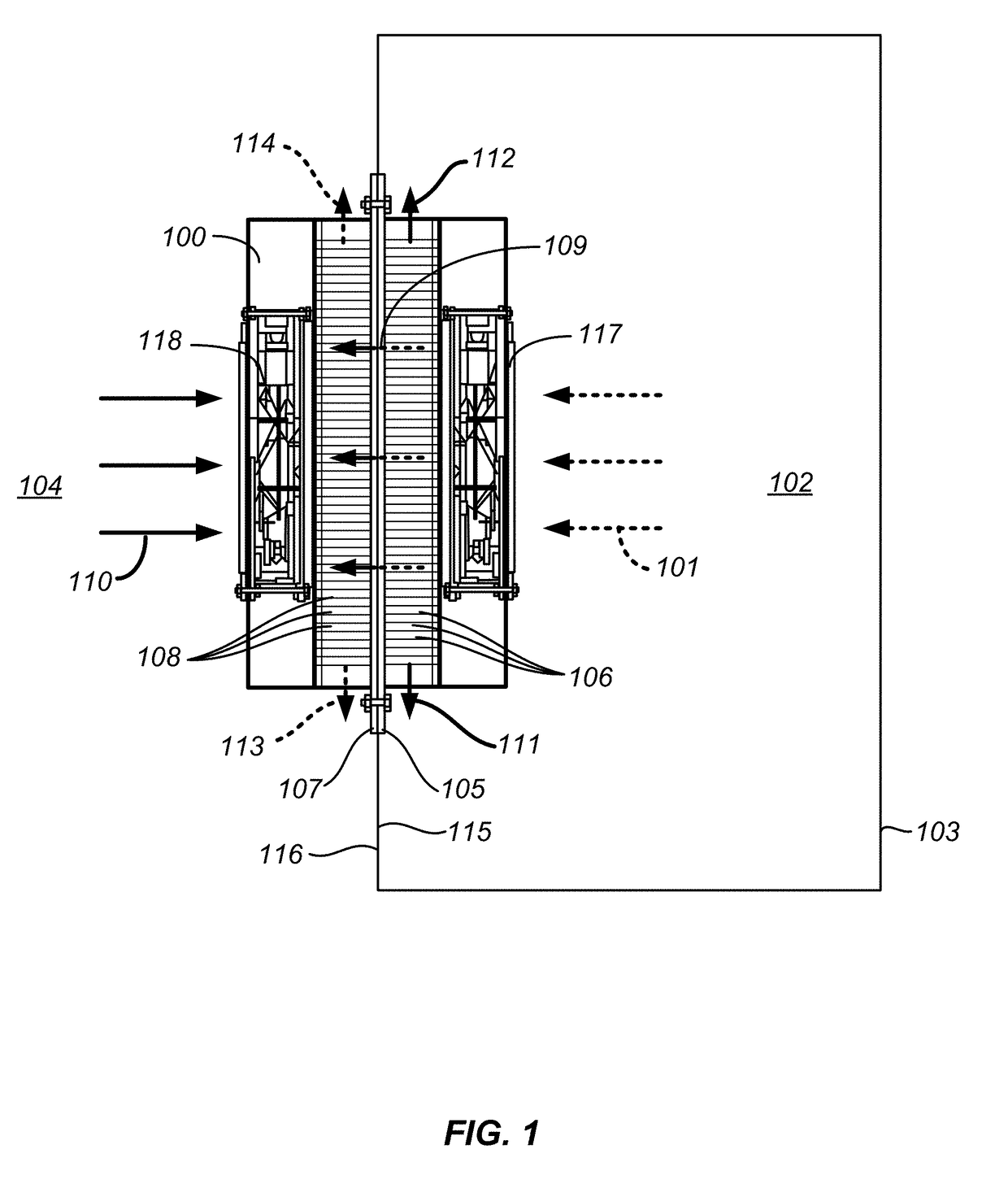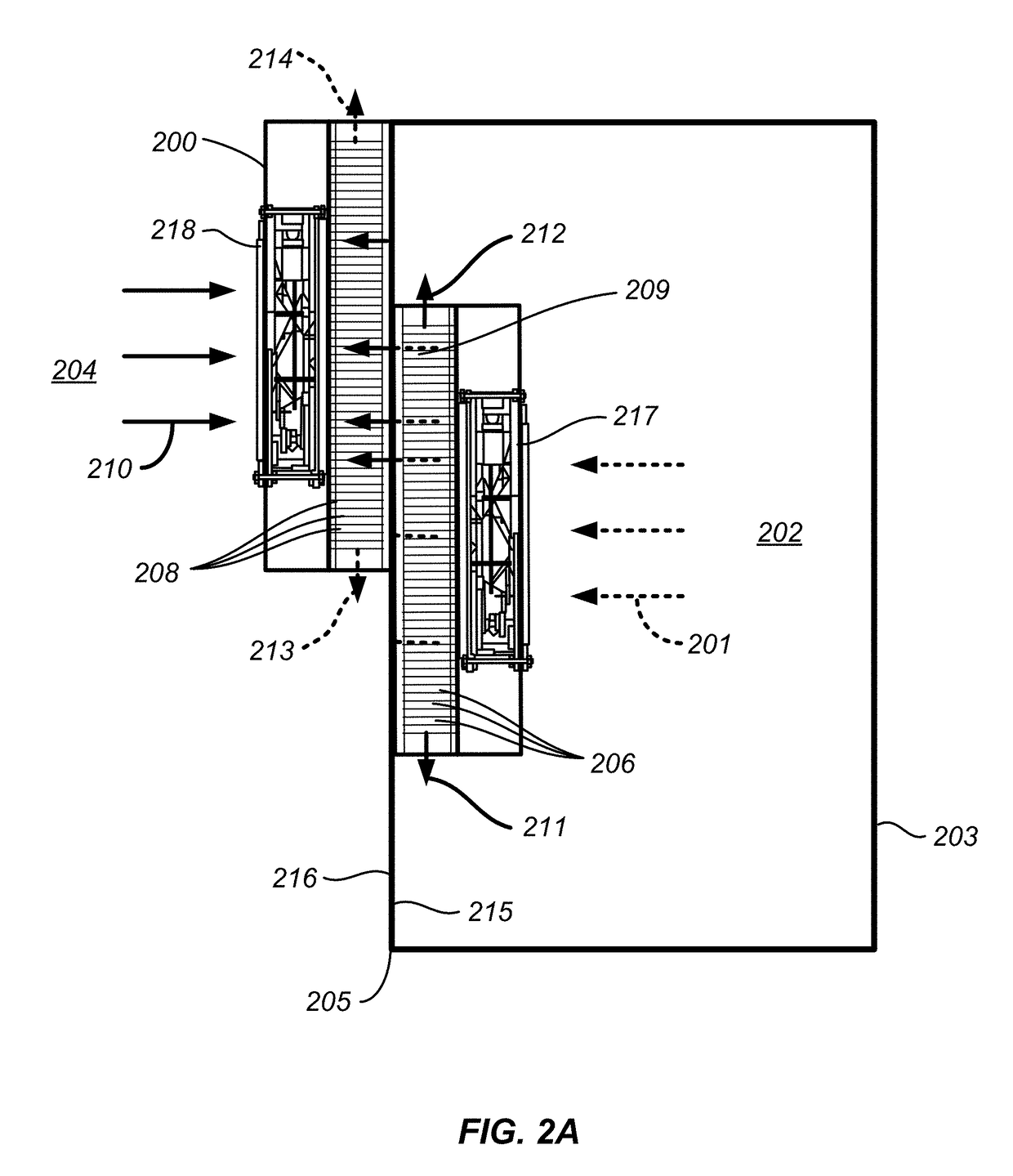Heat exchanger assemblies and methods for cooling the interior of an enclosure
a technology of heat exchangers and enclosures, applied in the direction of lighting and heating apparatus, heating types, laminated elements, etc., can solve the problems of equipment that overheats, equipment that cannot be replaced, and overheating of computer components, so as to prevent contaminants, reduce the effect of thermal gradient, and reduce the cost of replacemen
- Summary
- Abstract
- Description
- Claims
- Application Information
AI Technical Summary
Benefits of technology
Problems solved by technology
Method used
Image
Examples
Embodiment Construction
[0020]Certain embodiments of the invention effectively and efficiently facilitate cooling the interior of a substantially airtight enclosure using principles of thermal conduction. A plethora of scalable configurations and installation orientations of the heat exchanger assembly are contemplated to cool a variety of enclosure sizes. In some embodiments, the fins have spacing, height, and thickness sized to fit a performance curve of each of the connected fans. The fans may be connected to a programmable thermostat.
[0021]To avoid over-heating inside an enclosure, a wide variety of techniques are employed to maintain at least an ambient temperature within the enclosure. Historically, there are four common ways to remove heat from enclosures. These include natural convection, compressed air, heat pipes and air conditioners.
[0022]Natural convection relies on fans and filters and is inexpensive to operate; however, natural convection only works when the ambient air is cool and clean. If ...
PUM
 Login to View More
Login to View More Abstract
Description
Claims
Application Information
 Login to View More
Login to View More - R&D
- Intellectual Property
- Life Sciences
- Materials
- Tech Scout
- Unparalleled Data Quality
- Higher Quality Content
- 60% Fewer Hallucinations
Browse by: Latest US Patents, China's latest patents, Technical Efficacy Thesaurus, Application Domain, Technology Topic, Popular Technical Reports.
© 2025 PatSnap. All rights reserved.Legal|Privacy policy|Modern Slavery Act Transparency Statement|Sitemap|About US| Contact US: help@patsnap.com



